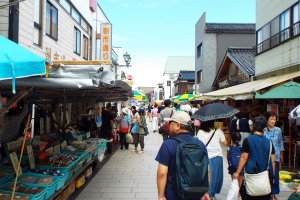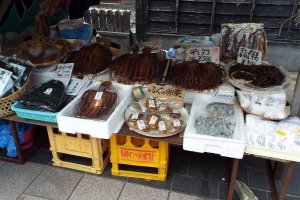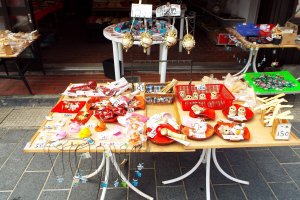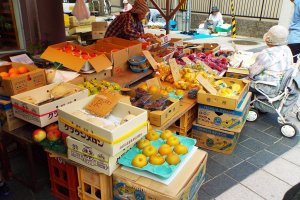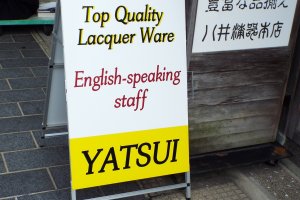After rising early, I walked from my hotel along the port side to the Morning Market on Asaichi-dori prior to their opening. My objective was to see what activities were taking place before the crowds descended. There was a mixture of all ages of women setting up their tables and tents. Several were bantering back forth with their neighbors.
Overall there was a joyful festive spirit amongst the ladies. Some had weatherworn faces, which I am sure could tell some very interesting stories. Even though it was still an hour or so away from opening, many were selling their wares to the few people walking about, including myself.
The market is listed as one of the three largest Morning Markets in Japan and is the oldest at 1000 years.
Wajima is a lacquerware town with mostly men craftsman. The ladies were left to work outside and would meet in the mornings to barter for their daily food. This was the beginning of the Morning Market.
You can find various fresh caught seafood, vegetables, fruit, local sweets, lacquerware products, as well as many other crafts.
I came back after the market opened and the atmosphere had changed significantly. The ladies were all business and much more aggressive in marketing their wares. Near the end of the street I met Yamanishi Toshie who was actively selling Noto sweets with a theme from a TV drama “Mare”, which takes place on the peninsula and in Yokohama. Ms. Toshi has been in this same spot for 38 years and is the owner of the sweets store behind her tent. I purchased several boxes of cookies for gifts and the prices were very reasonable.
At one of the craft booths I saw a table of wooden rippled back frogs and the proprietor was rubbing a stick over a back, which resulted in a croaking sound. I immediately thought of my daughter-in-law who loves anything with frogs and purchased one for her next birthday.
Coming back to the entrance I noticed a lacquerware store with signs advertising that their staff spoke English. The shop was full of interesting pieces made by local craftsmen. You will notice many places selling lacquer bowls and chopsticks. If they seem very inexpensive they probably are not made in Wajima. I highly recommend if you are looking for a beautiful piece of lacquerware to take home, that you pay the extra price for the authenticity and support of the local artisans. If you have time during your trip please visit one of the over 500 lacquerware shops and learn about the unbelievable process it takes to make just one piece.
When I return to Wajima, I plan on going back to the Morning Market to see all the things I missed and talk again to the ladies.


